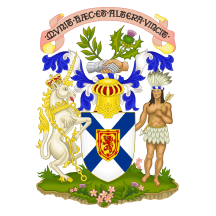Residents in central Nova Scotia are grappling with severe water shortages as drought conditions persist. Last weekend, Brian Wilson discovered his family’s well was dry when his daughter turned on the tap and no water flowed. "That led me to start investigating what the cause was and we determined upon opening the hatch to the well that we were empty," Wilson said about their home in Stewiacke, located about 70 kilometers northwest of Halifax.
Initially, Wilson thought they could rely on their cistern, which had previously provided water during dry spells. However, he soon found that it was also empty. The Wilson family is not alone in this predicament. Across Nova Scotia, wells and reservoirs are running dry, prompting municipalities to implement water conservation measures.
Wilson reached out to several water delivery companies in his rural area but faced challenges. "One of them was so backed up that they've stopped taking calls and … the one supplier that we're hoping is going to show up told us it would be at least a week before they could get to us," he said. With no running water at home, the family was forced to relocate to their camp about 45 minutes away, where they could access drinking water and take showers.
In response to the drought, the Town of Stewiacke has enacted strict water conservation measures. These include prohibiting the watering of gardens, lawns, and trees, as well as banning vehicle washing, filling swimming pools, and running sprinklers. The town primarily sources its water from the St. Andrews River, which is currently at its lowest level in a decade, according to town officials.
Marc Seguin, the town's Chief Administrative Officer, stated, "We have contingency plans in place should the river levels not be sufficient to supply our water demands." He added that while they are monitoring the situation daily, they have not yet reached a point where they need to truck in water.
Mandatory water conservation measures are also in effect in Annapolis County and Antigonish, while Halifax Regional Municipality has made conservation measures voluntary for now. Notices have been issued in several areas, including Stellarton, West Hants, and the Municipality of the District of Yarmouth and Queens.
In Yarmouth, laundromats are experiencing a surge in business as residents whose wells have run dry seek alternatives for washing clothes. Helen Muise, who works at K.D. Wash and Dry Laundry, noted, "Our washer and dryers do not stop. They are full from the time we open in the morning at 8 a.m. until the time we close at 6 p.m." Some customers are traveling over 100 kilometers one way to use the laundromat.
According to the provincial government, nearly half of Nova Scotians rely on groundwater from wells for their water supply. Gordon Check, a senior hydrogeologist with the Department of Environment and Climate Change, explained that while a natural decline in groundwater levels occurs every summer, this year has been particularly dry. He advised those with shallow wells to conserve water for essential daily needs.
For long-term solutions, Check suggested that residents experiencing frequent shortages consider deepening their wells or installing water storage containers like cisterns.
To assist residents, seven provincial parks are providing drinking water and showers daily from 1:30 p.m. to 3:30 p.m. These parks include Blomidon, Ellenwood Lake, Graves Island, Porters Lake, Rissers Beach, The Islands, and Valleyview.
Meteorologist Ryan Snoddon indicated that the forecast does not show much promise for relief, with the next chance of rain not expected until late next week. The last significant rainfall in the province occurred on June 7 and 8. In light of the dry conditions, the province has also banned open fires and restricted activities in the woods, including hiking, camping, and fishing, although camping remains permitted at campgrounds.

 Local News in Nova Scotia
Local News in Nova Scotia

 CBC News
CBC News Yahoo Canada
Yahoo Canada Newsweek Top
Newsweek Top America News
America News PennLive Pa. Politics
PennLive Pa. Politics Essentiallysports Combat Sports
Essentiallysports Combat Sports The List
The List